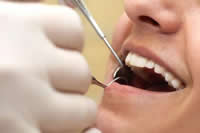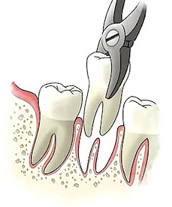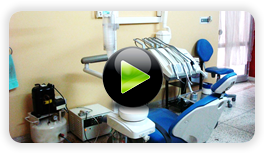What is Tooth Extraction?
 Tooth extraction is the process of removing one or more teeth from your mouth by a dentist. The whole process may be done in one session or completed over a number of visits. Depending on the problem which caused the need for extraction, the removed tooth may or may not need replacing. There can be a range of reasons for needing a tooth extracted. The most common reasons include; when your tooth is damaged beyond repair and when you have extensive gum disease that leads to the tooth loosening. In some cases, prematurely losing your milk teeth can lead to crowding as your second teeth come through. This can lead to crooked teeth and one or more may need to be extracted so that the remaining teeth can be straightened. Similarly, you may not have enough room in your mouth for your wisdom teeth to burst through. In cases like this, wisdom teeth can become stuck behind the existing tooth and may need extracting. The vast majority of patients don’t have any problems following extraction other than some temporary discomfort.
Tooth extraction is the process of removing one or more teeth from your mouth by a dentist. The whole process may be done in one session or completed over a number of visits. Depending on the problem which caused the need for extraction, the removed tooth may or may not need replacing. There can be a range of reasons for needing a tooth extracted. The most common reasons include; when your tooth is damaged beyond repair and when you have extensive gum disease that leads to the tooth loosening. In some cases, prematurely losing your milk teeth can lead to crowding as your second teeth come through. This can lead to crooked teeth and one or more may need to be extracted so that the remaining teeth can be straightened. Similarly, you may not have enough room in your mouth for your wisdom teeth to burst through. In cases like this, wisdom teeth can become stuck behind the existing tooth and may need extracting. The vast majority of patients don’t have any problems following extraction other than some temporary discomfort.
Procedure for Tooth Extractions
Before undergoing an extraction your dentist will give you a thorough oral examination and discuss your dental and medical history. At this stage you should tell your dentist about any medical conditions or medications which you have been prescribed. The extraction procedure is performed under local anaesthetic, so while you will be conscious, the affected area will be numbed to reduce discomfort during the procedure. Once the anaesthetic has taken effect, your dentist uses a tool called an elevator or forceps to widen the socket and loosen the tooth. Then, your dentist carefully holds the root of the tooth before moving it softly from side to side until it is ready to be completely removed. It is normal to feel some pressure in your mouth during the procedure, but the local anaesthetic should keep any discomfort to a minimum.
After the tooth has been successfully removed, there tends to be some bleeding and your dentist may use stitches to fasten the affected area. You will also be told to bite down on some padding so that the bleeding from your socket ceases. In some cases, tooth extraction can be quite tricky to perform, so your dentist may have to cut through your gum to reach the tooth’s root. Drilling through the bone to reach the root is also an option. It is important to remove the entire root as any remaining tissue could lead to an infection or even worse, an abscess.
Aftercare following a Tooth Extraction
 It is normal to remain at your dental clinic until the bleeding subsides which typically takes about ten minutes. It is usually recommended that you go home and relax to aid the healing process especially if you have had a general anaesthetic or a sedative. It is normal to experience some swelling and discomfort in the affected area for a couple of days following extraction. Similarly, you may feel stiffness in the jaw but this should be strictly temporary. Over the counter painkillers like paracetemol should be sufficient to control any pain you are feeling but make sure to avoid aspirin as this can interfere with the healing process.
It is normal to remain at your dental clinic until the bleeding subsides which typically takes about ten minutes. It is usually recommended that you go home and relax to aid the healing process especially if you have had a general anaesthetic or a sedative. It is normal to experience some swelling and discomfort in the affected area for a couple of days following extraction. Similarly, you may feel stiffness in the jaw but this should be strictly temporary. Over the counter painkillers like paracetemol should be sufficient to control any pain you are feeling but make sure to avoid aspirin as this can interfere with the healing process.
It is important to avoid hot food and drink before your anaesthetic has worn off, as you may accidentally burn your mouth or bite your cheek while it is numb. Try to avoid chewing on the side of your mouth where you have had the tooth removed for a few days afterwards and make sure not to drink alcohol or smoke for at least 24 hours following an extraction as this can affect the healing process.
Do not rinse your mouth out until the day after extraction, as this can disturb the blood clot and could restart the bleeding, which can have several serious consequences such as extended healing times or even infection. 24 hours after infection it is usually advised to rinse your mouth out with salt water a few times a day to help with the healing process. If you had stitches following an extraction, you may need to return to your dentist to have them removed. If this is not the case, then a follow-up visit is not usually necessary unless you are experiencing problems.
Risks involved in a Tooth Extraction
Although the vast majority of extractions are performed safely, as with all surgical procedures there are some risks involved. Potential complications of the surgery include; swelling, extended bleeding, severe pain and a fever. The most common complication of a tooth extraction is a dry socket, where the blood fails to clot and the socket heals very slowly. This can be very painful and may happen immediately after extraction. Fortunately, your dentist will be able to treat this problem easily using antibiotics and dress the wound. If you are taking the contraceptive pill or if you are a smoker, then you are at increased risk of developing dry socket after surgery.




